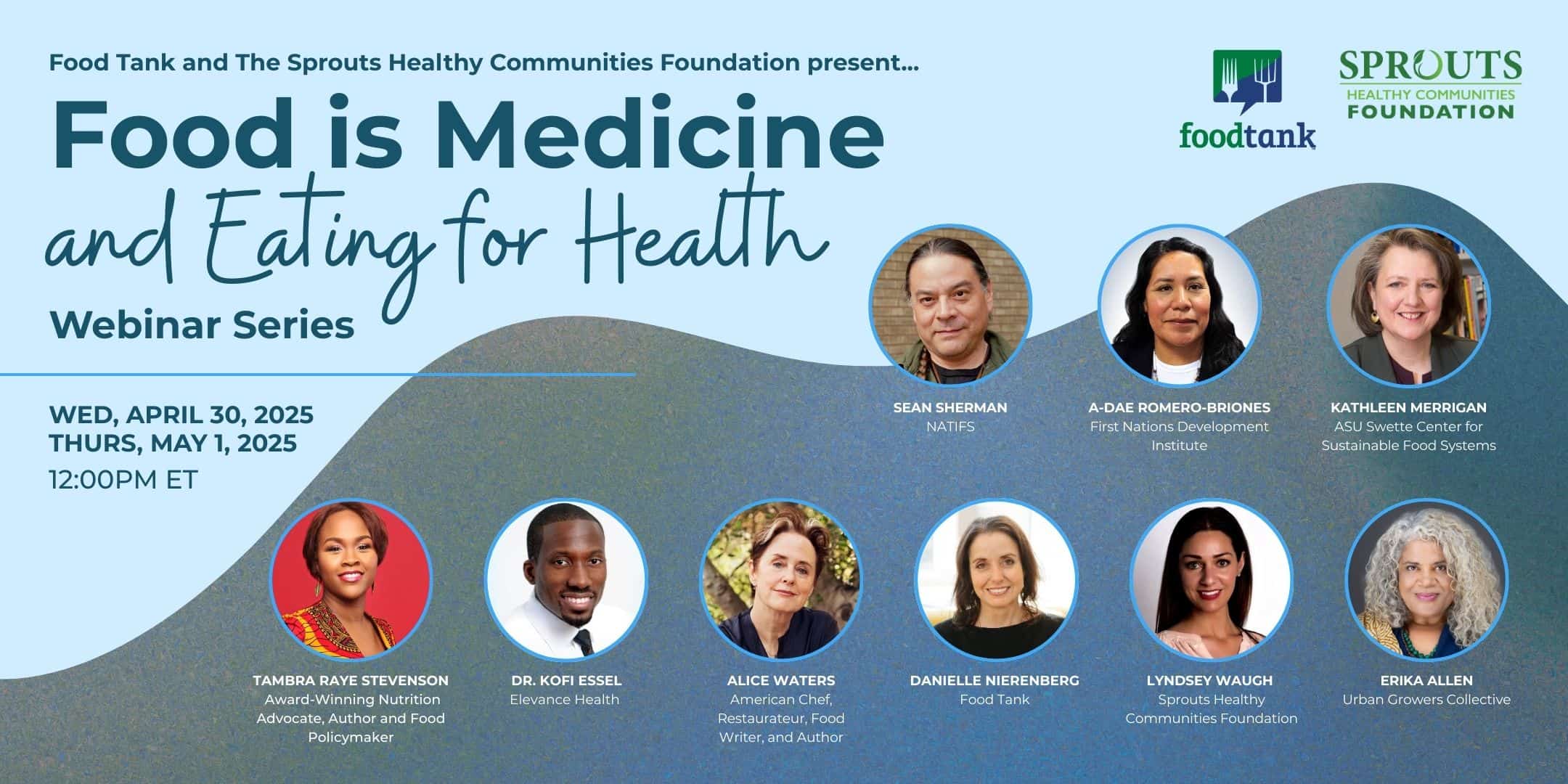At the Sprouts Healthy Communities Foundation, we think of ourselves as an ally in the global effort to identify opportunities and develop smart solutions that create positive change. It’s one of the reasons we were excited to support and participate in the recent two-part webinar series Food is Medicine and Eating for Health, presented by Food Tank — a nonprofit that aims to transform the global food system.
The series, hosted by Food Tank president Danielle Nierenberg, brought together experts across a range of fields, from community-based programs to academia to public policy and beyond, to discuss the needs of the global food system as it relates to food as medicine. Lyndsey Waugh, executive director at the Sprouts Healthy Communities Foundation, joined the panel and served as a co-host of the conversation.
She said Sprouts Healthy Communities Foundation is doing its best to engage young learners with healthy eating habits as a means of offsetting the potential for chronic disease in the future.
“We know that habits kids form early in life stay with them–and can shape their future,” she said, highlighting the organization’s commitment to supporting school garden programs. “It’s so important that kids have a seat at the table and are part of the conversation. Everyone in the community has a voice, and we all have something valuable to contribute.”
The panel of experts in part 1 included:
- Alice Waters, American chef, restaurateur, food writer, and author.
- A-dae Romero-Briones, Vice President, Policy & Research, Native Agriculture and Food Systems Investments, First Nations Development Institute
- Dr. Kofi Essel, Director of Food as Medicine, Elevance Health
- Rachel Fisher, Senior Advisor and Food is Medicine Co-lead, Office of the Assistant Secretary for Health, U.S. Department of Health and Human Services (HHS)
- Erika Allen, CEO, Urban Growers Collective
- Kathleen Merrigan, Executive Director, Arizona State University Swette Center for Sustainable Food Systems
As a chef, restaurateur, food writer, and author, Alice Waters said she witnessed the impact that sensory engagement has on learning when she started the edible schoolyard. With it, she said students could learn science, art, geography lessons and beyond while engaging with food.
“I believe our senses are pathways into our minds. If we aren’t using our senses we aren’t experiencing the beauty of the world. It’s so great that food is all about that,” she said. “It brings us globally together.”
Kathleen Merrigan, Executive Director at Arizona State University’s Swette Center for Sustainable Food Systems, sees the growing “food as medicine” conversation as a meaningful opportunity–one that goes beyond physical health.
“Food is more than just nutrition,” she said. “It’s about culture and it’s about connectivity, and we need to think in bigger ways.”
Rather than viewing food solely through a clinical or prescriptive lens, Merrigan hopes the movement makes room to explore the emotional and communal benefits of food–how it brings people together, noting the wealth of knowledge in our cultural food traditions. She also reflected on the pivotal moment in 2010, when the release of the updated Dietary Guidelines aimed to help Americans embrace healthier habits.
The panel of experts in part 2 included:
- Radha Muthiah, CEO, Capital Area Food Bank
- Sean Sherman, Oglala Lakota Sioux Chef and Founder, North American Traditional Indigenous Food Systems (NATIFS)
- Tambra Raye Stevenson, award-winning nutrition advocate, author and food policymaker
- Katie Garfield, Director of Whole Person Care, Center for Health Law and Policy Innovation of Harvard Law School
- Devon Klatell, Vice President, Food Initiative, The Rockefeller Foundation
As the founder of North American Traditional Indigenous Food Systems (NATIFS), and as a chef, Sean Sherman shared how his organization is working to celebrate the diversity of healthy, indigenous foods, while creating systems that make them more accessible.
“I see so many opportunities to utilize how we use chefs and commercial kitchens to not only normalize but popularize the diversity in our food systems,” he said. “We want to showcase that it’s possible to open a popular restaurant that serves indigenous ingredients and cut away colonial pieces like dairy, cane sugar, wheat, flour, and really focus on plant and protein diversity.”
Panelists agreed that nourishing benefits of food on health can not be separated from public health. The garden is an extension of a medical office – and there is an opportunity for everyone to experience the connection between growing and preparing foods, with how food makes them feel. The concept of Food as Medicine should not only be discussed for its linkage to food scarcity but for its ability to influence healthier living.
“We all have a chance to think of ourselves as part of (the food system) and you don’t have to be an expert in it. We’re all dancing in this space where we get to connect with food,” Waugh said. “We’re using food as a bridge-builder and a way to revitalize and continue to share around culture.”
To view part 2 of the Food is Medicine and Eating for Health series, click here.

